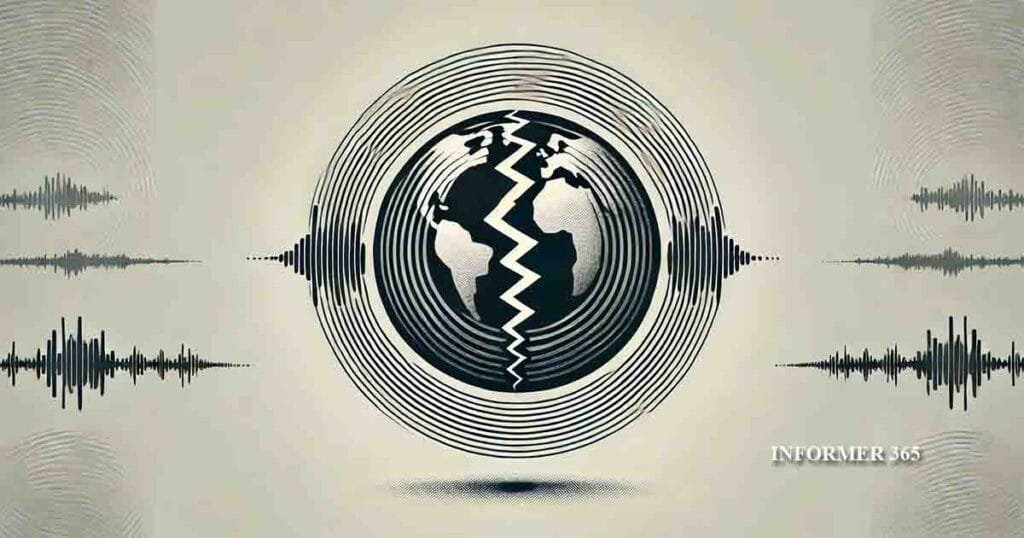- A 6.2 magnitude earthquake struck near Aquila, Michoacán early Sunday morning.
- The quake’s epicenter was 21 kilometers southeast of Aquila, at a depth of 34 kilometers.
- No major damage or casualties have been reported so far.
- Over 329 aftershocks have been recorded, with the largest at 4.8 magnitude.
- Mexico’s geographical location makes it highly prone to seismic activity.
A 6.2 magnitude earthquake rattled southwestern Mexico early Sunday morning, prompting residents to flee into the streets. According to the United States Geological Survey (USGS), the quake struck at approximately 2:30 AM local time. Its epicenter was located 21 kilometers (13 miles) southeast of Aquila, Michoacán, near the boundary between the Colima and Michoacán states. The earthquake occurred at a depth of 34 kilometers (21 miles).
President Claudia Sheinbaum confirmed on the social media platform X that emergency response teams had been activated. She assured the public, saying, “There are no new developments,” while teams worked diligently to ensure the safety of the affected regions.
Additionally, Mexico’s Social Security Institute reported no damage in Mexico City, which is situated about 600 kilometers (372 miles) from the quake’s epicenter.
In towns such as Coalcomán and Uruapan, surveillance footage captured buildings swaying and parked cars shaking. Many residents recounted being awakened by the tremors and rushing outside to find safety.
By 9:00 AM local time, the national seismological service had recorded 329 aftershocks, with the strongest measuring a magnitude of 4.8. Authorities warned that these aftershocks might persist for the next 48 hours, urging residents to remain cautious.
Mexico’s Seismic Reality
Mexico’s susceptibility to earthquakes is due to its geographical position at the convergence of five tectonic plates. These plates include the North American Plate, Pacific Plate, Cocos Plate, Rivera Plate, and Caribbean Plate.
The southern region, in particular, lies on a subduction zone. Here, the Cocos Plate is forced beneath the North American Plate, making it a hotspot for seismic activity. Fault lines such as the Gulf of California Rift Zone and the Imperial Fault exacerbate the region’s vulnerability.
Earthquakes are an ongoing threat. Urban centers face particular risks due to their dense populations and extensive infrastructure. Over the past 40 years, Mexico has experienced at least seven earthquakes with magnitudes of 7 or higher. These events have collectively claimed approximately 10,000 lives.
Among these disasters, the 1985 earthquake remains the deadliest. With a magnitude of 8.1, it caused widespread destruction and thousands of fatalities in Mexico City.
This morning’s earthquake occurred in a region that is no stranger to seismic disasters. On September 19, 2022, a 7.6 magnitude earthquake struck the same area, resulting in significant damage and one fatality. Coincidentally, Mexico has experienced other large earthquakes on September 19, including a 7.1 magnitude quake in 2017 and the infamous 8.1 magnitude quake in 1985. These tragic coincidences have made the date a poignant reminder of the nation’s geological challenges.
Preparedness and Resilience
Mexico has made considerable progress in earthquake preparedness. Measures such as regular drills and retrofitting buildings to withstand tremors have been implemented. These efforts have contributed to a reduction in casualties in recent years.
However, experts emphasize that densely populated cities remain highly vulnerable. A local seismologist explained, “You can prepare for earthquakes, but you can never predict their exact impact.”
As residents recover from the initial shock and prepare for potential aftershocks, Mexico’s resilience is once again being tested. Emergency services remain on high alert, underscoring the importance of vigilance in a country where the earth never stays still for long.


